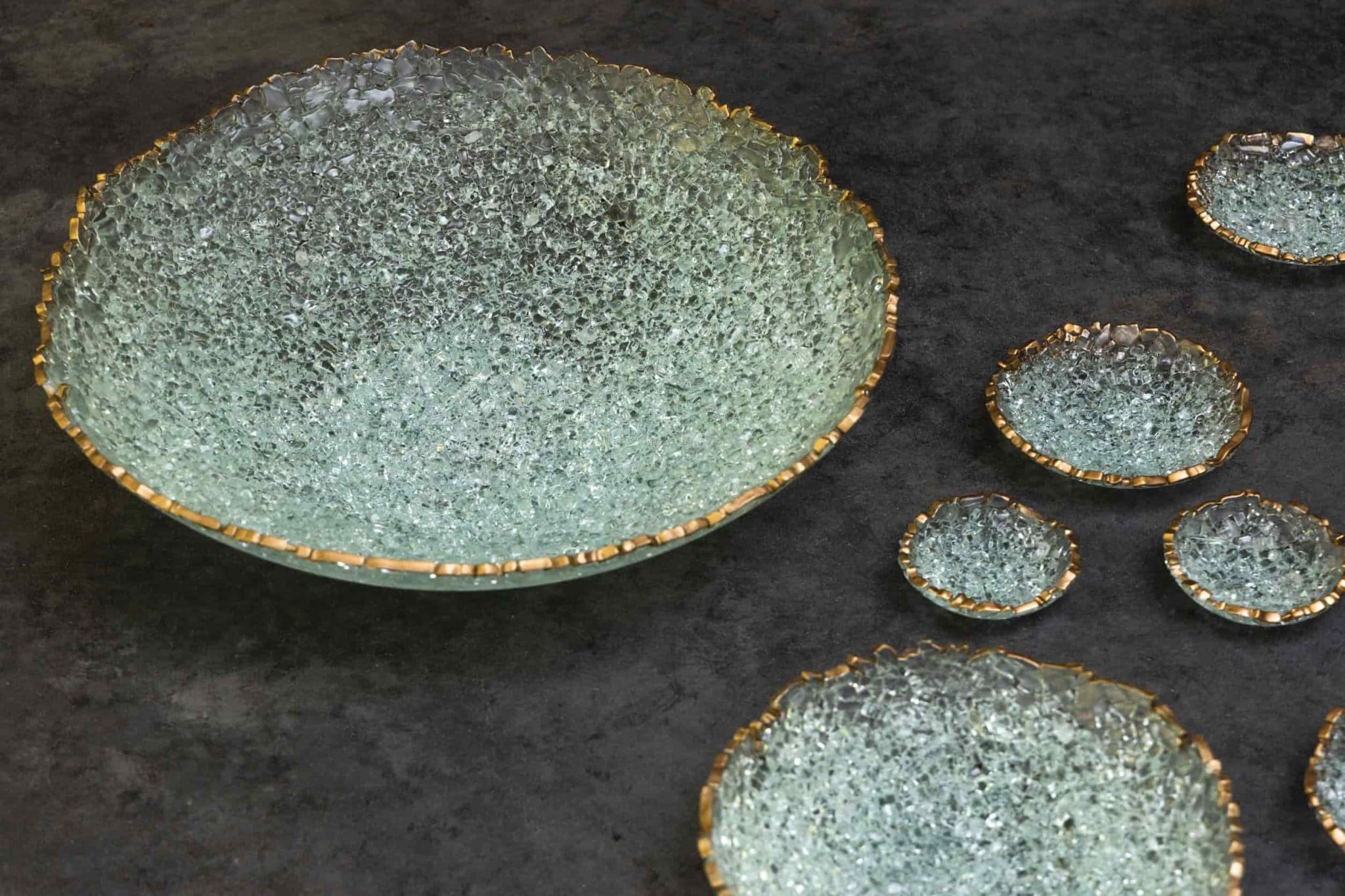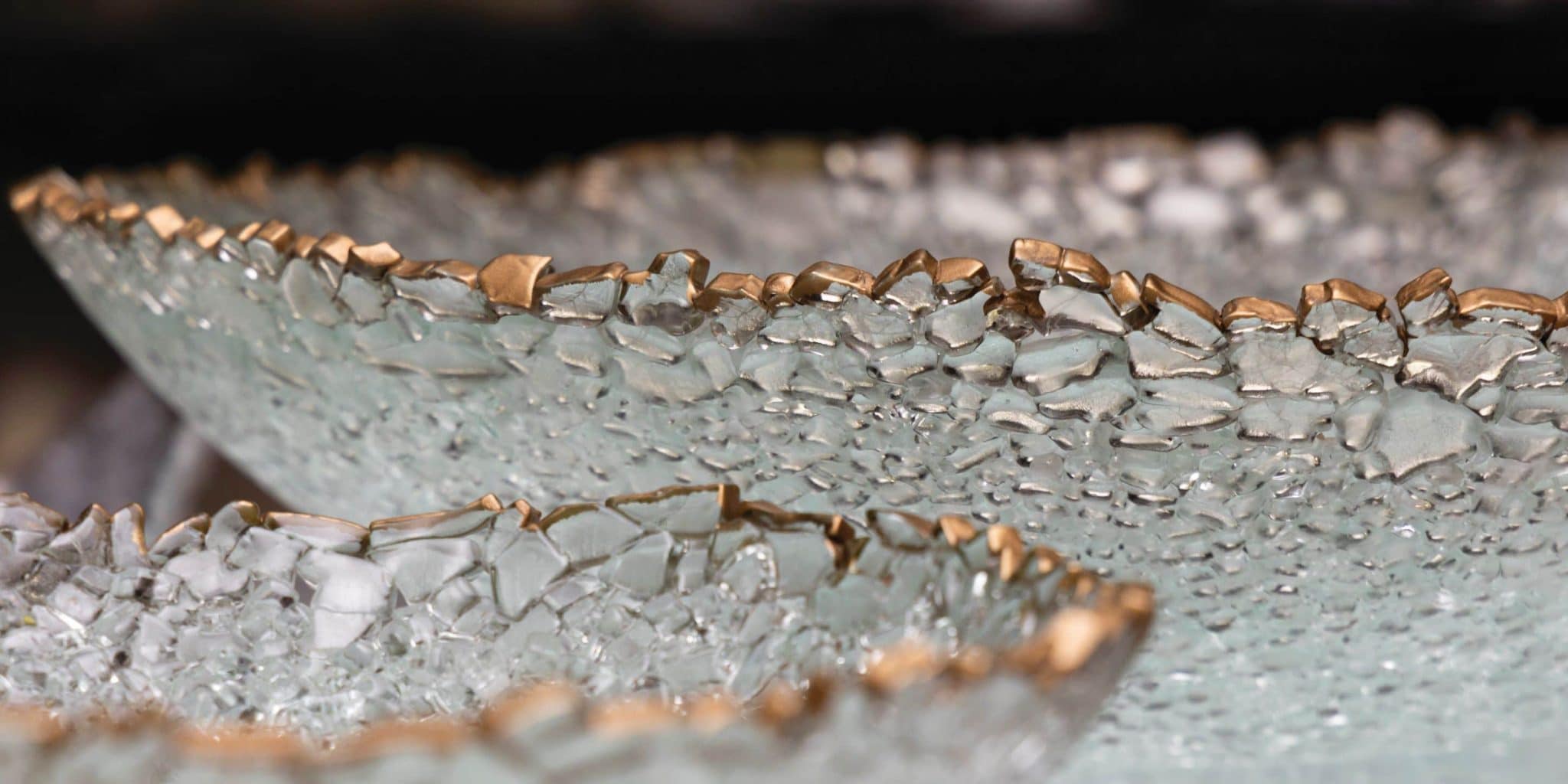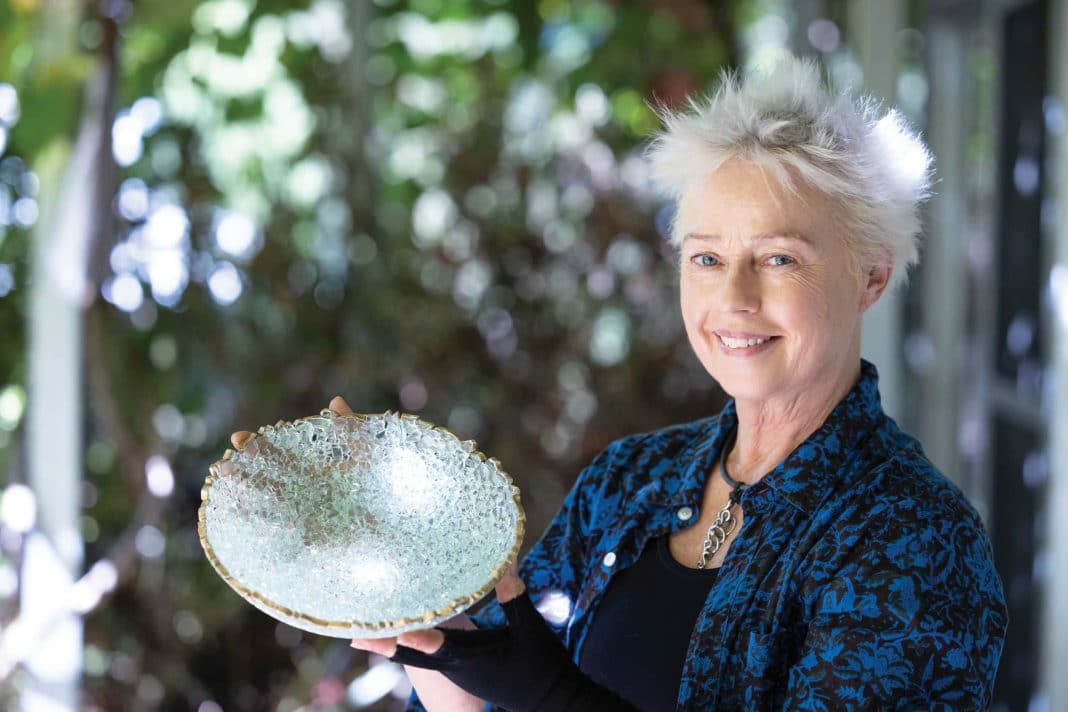“The Gaia Bowls are about putting something back together again that’s been broken.”
Canberra glass artist Ngaio Fitzpatrick took the initial leap into her artistic career with a degree in fashion design, spurred on by her innate inner desire to create.
“I worked for many years in textile design and then for an environmentally sustainable architect, but I decided I needed to get back to design and I wanted to make glass. I was accepted into the ANU glass workshop and got so much more than I bargained for,” smiled Ngaio.
“Art is like philosophy: you can bring thoughts and ideas into your practice and your work is so much more than decoration. I had always felt very passionate about climate change, and after working with an environmentally sustainable architectural company, I did my honours and read an article on geo-engineering.
“It was almost as if it doesn’t matter how much fossil fuels you burn, by the time we finish there’ll be no sea creatures, no trees, no animals left – just us living in a technological world. I made a decision to make my work about climate change and applied to be an artist in residence with the ANU Institute of Climate, Energy and Disaster Solutions.”
Wanting to work with scientists and communicate climate change through art provided Ngaio with a unique opportunity to bring art to science presentations.
“Adding scientific meaning to the work, which is about the science and facts of climate change and making the frightening information more accessible by drawing people in using beauty, was important. It helps people see things at their own pace and process it,” she said.
Using recycled glass, Ngaio smashes windows that are no longer usable – they’re either too big or too small, and the chances of someone ordering the exact same measurements are slim to none. So, instead of sending them to landfill, she transforms tiny shards into glistening pieces of art.
“I love the way glass refracts in the light – it’s such a high energy material. When I was starting my degree in glass as a mature aged student, I got out of the car one day and saw broken pieces in the carpark, and they were just shining like a diamond,” recalls Ngaio.
“I just thought it was a waste, so I got a dustpan and brush, cleaned it up and started working to figure out the temperature needed to fuse but not lose the crystals. It took a couple of years, and my work was put on hold while I experimented with filming big sheets of glass smash on the ground.
“I’ll never forget hearing that sound for the first time – I was picking up a sheet of glass from a contact of mine and he asked if I wanted it in a whole piece or in a bucket. I realised it wouldn’t fit in my car so I said a bucket would be great and he just picked it up and threw it on the concrete floor.”
The shattering of that slab of glass was the beginning of a life-long love affair for Ngaio. Her glasswork has morphed from one style to the next, but the material has remained the same.
“The noise as it exploded and the released particles spattered… I couldn’t get out of my mind the adrenaline that went through my body. So, we started filming it and slowing it right down to the moment of the fracture,” she said.
“What it meant to me was in a way, the moment of that fracture woke me up. I felt like I had been sleepwalking and dealing with things as they come. But things can change quickly – we’re here one day and gone tomorrow.”
Combining her passion for climate justice with her desire to create, Ngaio gravitated towards making bowls with the glass particles. The bowls represented the way humans cup something precious in our hands – mugs of hot tea, the faces of the people we love.
“Art is a wonderful way to find out what’s important to you, whether that be human rights, beauty, ugliness… it’s about finding your place in the world and what it is that gives you the passion to continue,” she said.
“But it’s not an easy thing to do – I use the Gaia Bowls to fund my arts practice and draw attention to climate change. I just hope we can all work together and put something back together that’s been broken.
“I decided to finish the bowls with gold leaf, which is a Japanese artform of Kintsugi. It’s the art of repairing something that’s broken with gold, in the hope we may begin to put the planet we’ve taken apart in so many ways back together again. Gaia is also the name of the spirit of the Earth, which is a female.
“Perhaps we will appreciate we need to make changes and make them fast. I don’t think we can speak openly enough about the need to cut out fossil fuels, but no matter what happens, it’s very true that human beings are not as important as the Earth is.”
Find Ngaio’s Gaia Bowls at ngaiofitzpatrick.com/gaia-bowls





